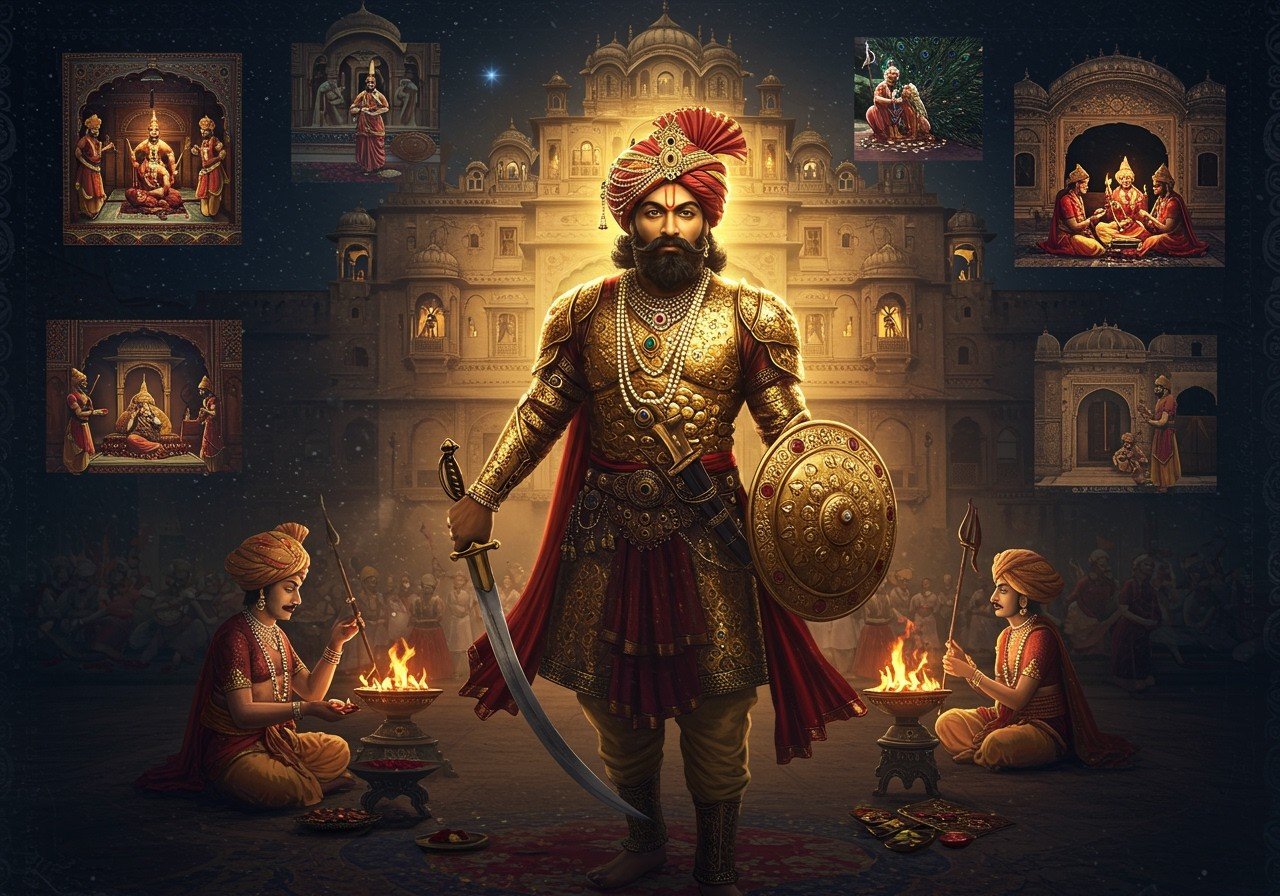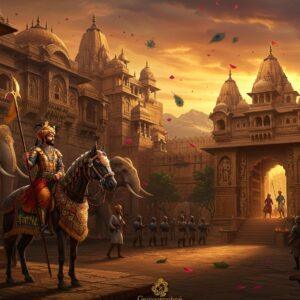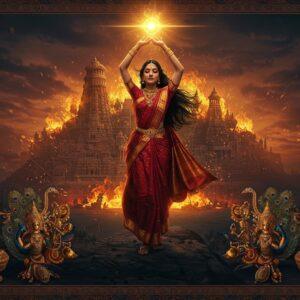
Kshatriya rituals and traditions are a vital thread in the rich tapestry of India’s cultural heritage. These customs, imbued with historical significance, reflect the warrior and ruling ethos of the Kshatriya caste. They continue to shape the identity of Kshatriyas today, blending time-honored practices with a modern outlook. Understanding these traditions offers a glimpse into a world where honor, duty, and spirituality intertwine, strengthening community bonds and preserving a vibrant legacy.
Delving into the Heart of Kshatriya Weddings
Kshatriya weddings, renowned for their elaborate customs, are a celebration of family lineage and cultural pride. Pre-wedding rituals like the ‘Tilak’ hold deep meaning, signifying the acceptance of the groom into the bride’s family. The ‘Kanyadaan’, where the father entrusts his daughter to the groom, is a poignant moment filled with emotion. The vibrant ‘Barat’, or groom’s procession, showcases valor and status, while the ‘Saptapadi’, the seven sacred vows around the fire, symbolizes the couple’s lifelong commitment to each other. Post-wedding, the ‘Vidaai’, the bride’s farewell, marks a new beginning tinged with bittersweet emotions.
Kshatriya Rituals and Traditions: A Journey Through Time
Kshatriyas, the warrior and ruling class in Hindu society, possess a rich heritage of customs and traditions. These traditions, deeply rooted in history, continue to shape their identity and societal roles today. Let’s explore this vibrant tapestry of customs:
Social Role and Code of Conduct
- Warrior Ethos: Kshatriyas are renowned for their courage, chivalry, and martial prowess. These qualities, combined with a deep sense of discipline and spiritual understanding, form the bedrock of their identity. Their very name evokes images of bravery on the battlefield and wisdom in counsel.
- Protectors and Rulers: The primary duty of a Kshatriya has always been the protection of the people. Maintaining order, administering justice, and defending their kingdoms were historically their core responsibilities. They were seen as the guardians of society, ensuring the safety and well-being of those under their care.
- Dharma: Kshatriyas hold a unique position as upholders of dharma, the moral and religious law. This dedication to righteousness guides their actions and decisions, shaping their interactions within society and their commitment to a just and honorable life.
- Noble Conduct: A strict warrior code dictates their behavior, emphasizing honorable conduct, especially in battle. This code, passed down through generations, fosters a deep sense of integrity and respect for both allies and adversaries, ensuring that even in conflict, dignity and righteousness prevail.
Marriage Customs
- Arranged Marriages: Traditionally, arranged marriages are the norm in Kshatriya communities. Fathers play a significant role in selecting suitable partners for their children, ensuring compatibility of family values and social standing. This practice reflects the importance of family lineage and the continuity of traditions.
- Permissible Marriage Forms: The Dharmashastra, the ancient Hindu legal text, outlines various permissible forms of marriage, each with its own customs and significance. These forms, including Gandharva (marriage by mutual consent) and Rakshasa (marriage by abduction), offer a glimpse into the diverse practices within the Kshatriya caste.
- Unique Rituals: Kshatriya marriages are characterized by distinct rituals and practices that set them apart from other castes. These customs, often steeped in symbolism and ancient traditions, reflect the unique values and beliefs of the community, adding a special touch to the sacred union.
Wedding Rituals
- Tilak Ceremony: This pre-wedding ritual sees male members of the bride’s family visiting the groom’s home, where the bride’s brother applies tilak to the groom’s forehead. This gesture symbolizes acceptance and goodwill, marking the beginning of the wedding celebrations. Gifts are traditionally exchanged as a token of respect and affection.
- Ganapati Sthapana and Griha Shanti: These ceremonies invoke divine blessings for the couple’s future. Yagnas (fire rituals) and pujas (worship ceremonies) are performed, and an idol of Lord Ganesha, the remover of obstacles, is installed to ensure a smooth and auspicious start to married life.
- Pithi Dastoor: In this vibrant ritual, a paste of turmeric and sandalwood is applied to both the bride and groom, symbolizing purification and good fortune. The bride, often adorned in radiant orange Rajasthani attire, is sometimes sheltered under a silken canopy held aloft by swords, a nod to the warrior heritage.
- Janev Ceremony: The groom, attired in a saffron robe, receives the sacred thread (janeu) during this important ceremony. A yagna is performed, and he symbolically contemplates renouncing worldly attachments before accepting the responsibilities of marriage.
- Baraat: The groom’s procession, traditionally an all-male affair, is a display of valor and celebration. The groom, often riding an elephant or horse and carrying a sword, is accompanied by his family and friends as they journey to the wedding venue.
- Wedding Ceremony: The heart of the wedding celebrations is the ceremony itself, sanctified by a yagna fire and Vedic mantras. The couple takes the sacred ‘pheras’ (circumambulations) around the fire, solidifying their vows and embarking on their journey together.
Religious Practices
- Vaishnavites and Shaivites: While primarily Vaishnavites (worshippers of Lord Vishnu), Kshatriyas also partake in Shaivite rituals (honoring Lord Shiva). This reflects the inclusivity and diverse spiritual beliefs within the community, where both traditions are revered. They celebrate all Hindu religious festivals with fervor, demonstrating their deep connection to their faith.
- Vedic Studies and Sacrifices: Historically, Kshatriyas were deeply involved in Vedic studies and performed fire sacrifices as part of their religious duties. This pursuit of knowledge and spiritual growth played a significant role in their understanding of dharma and their role in society.
- Worship of Ancestors: Respect for ancestors is a cornerstone of Kshatriya traditions. They conduct ceremonies and rituals, known as ‘Havishmat Pitris’, to pay homage to their forefathers and seek their blessings.
- Shalagrama Stone Worship: In some Kshatriya traditions, the Shalagrama stone, a sacred black fossil found in the Gandaki River, is revered as a representation of Lord Vishnu. Honoring four images of the Shalagrama stone symbolizes their deep connection to the divine and their reverence for ancient spiritual practices.
Martial Arts and Training
- Shastra Vidya: Martial arts, known as ‘Shastra Vidya’ or ‘Anga Vidya’, are deeply ingrained in the Kshatriya way of life. These skills were not merely for combat but also for self-discipline, physical fitness, and the development of mental strength.
- Spiritual Discipline: Martial arts training for Kshatriyas transcends the physical realm, encompassing mental and spiritual development. It fosters focus, resilience, and inner strength, qualities essential for both warriors and leaders.
- Weapon Symbolism: Weapons hold symbolic meaning, reflecting the values and ethos of the Kshatriya. The mace (‘gada’) represents strength and authority, while the spear (‘shula’) symbolizes precision and focus.
- Ritualistic Practices: Martial arts lessons often incorporate rituals and ceremonies, reinforcing traditional values and connecting the practice to a deeper spiritual understanding.
Cultural Values
- Cultural Heritage: Kshatriyas are considered forerunners of Indian cultural heritage and chivalry. Their values and traditions have shaped Indian culture for centuries.
- Traditional Values: They maintain a deep respect for time-tested customs and traditions, gracefully integrating them into modern life. This blend of ancient wisdom and contemporary living preserves their cultural heritage while embracing the present.
- Role of Women: Historically, Kshatriya women have played a significant role in religious festivals and cultural rituals. Their active participation underscores the importance of women in preserving and transmitting cultural heritage.
- Unique Festivals: Kshatriya fairs and festivals showcase their distinct cultural identity. Their marriage ceremonies, rituals, and practices differ from those of other communities, reflecting the unique heritage of the warrior class.
How Poojn Supports Your Kshatriya Traditions
At poojn.in, we understand the deep significance of Kshatriya customs and traditions. We offer a wide selection of authentic puja items specifically for Kshatriya ceremonies, ensuring you have everything you need to honor your heritage. Explore our collection of:
- Sacred Thread (Janeu): Crafted from pure cotton, our sacred threads are ideal for upanayana ceremonies, symbolizing the beginning of spiritual learning.
- Copper and Brass Items: Discover traditional vessels and utensils for ritual offerings, adding authenticity to your ceremonies.
- Puja Samagri Kits: Our comprehensive kits provide all the essential items needed for various Kshatriya ceremonies, simplifying your preparations.
At poojn.in (www.poojn.in), we’re committed to providing high-quality, authentic products that honor the sanctity of your traditions. We offer convenient ordering options:
- Website: www.poojn.in
- Phone: 03369029784
- WhatsApp: 9476142738
Our knowledgeable team can assist you with any questions and guide you in selecting the right items. We provide pan-India delivery, ensuring your puja essentials reach you with care and respect. For bulk orders for community events, we invite you to contact us for personalized assistance.
Honoring Tradition and Embracing the Future
Kshatriya rituals and traditions offer a profound connection to a heritage rich in honor, duty, and spirituality. These customs, passed down through generations, continue to shape identity and foster a sense of belonging. As lifestyles evolve, Kshatriyas skillfully weave their rich heritage into the fabric of modern living, demonstrating that tradition and progress can coexist harmoniously. Through the lens of history, we witness the unwavering strength and resilience of the Kshatriyas, balancing the responsibilities of a warrior with the wisdom of a leader. Their rituals and customs are a testament to the power of heritage, reminding us that by honoring our past, we enrich our present and shape a meaningful future.
Sabarimala Pilgrimage: A Spiritual Guide
Dharma and Karma in Hinduism Explained


